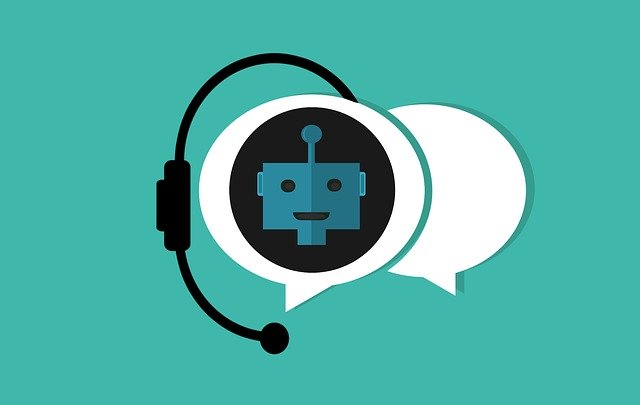Tech
Experts Reveal Why and How to Use Chatbots in Business

How do you handle your customers and entertain their anytime query?
With time, technology is upgrading, and advancements are elevating the business to the next level. Chatbots are one such advancement that has made the customer service easy.
Let’s check out why you should consider Chatbots in your business:
Time Efficient: Most of your customers ask common questions which are irritating to respond by a human. However, such pre-defined questions can be answered by Chatbots. Answering such repetitive queries doesn’t waste your time and money. Moreover, it also binds the customer with your services regardless of their query. Chatbot for business is an AI-driven technology that learns through customer queries and develops a smart intelligence to respond to common questions instantly.
Enlarge Your Audience: No business is 100% dependent on a single marketing strategy to serve customers. Instead, it uses the user-data to bestow other services/products to increase user engagement as well as business profit. Similarly, using chatbots helps you collect user-data and enable you to use it for other marketing tactics. AI-based Chatbots can collect the user data smartly.
Zero Negligence: Every customer deserves attention and adequate response to their query. However, a human can’t serve all customers at a particular time. This isn’t a trouble with a chatbot. Chatbots can respond to multiple users at a time, building engagement with them without developing long waiting queues. Moreover, with human service, there are probabilities of error or negligence. A chatbot overcomes these hurdles and offers seamless customer service for your business.
100% Personalized Chat: Chatbots learn user behavior and deliver the most relevant response accordingly. Chatbots are enabled with Artificial Intelligence that allows the chatbots to learn from customers and build a strong understanding. The understanding helps chatbots to answer the customers in a personalized manner. Undoubtedly, a personal touch will help your customers better connect with your services.
Flexibility: Today, chatbots aren’t limited to serving customers for specific queries. Instead, any online business, including eCommerce, healthcare, sales & marketing, etc. can integrate chatbots to their business and entertain their customers better. All in all, using chatbot has a broad scope, which doesn’t apply to a specific niche.
These are some vital benefits of using chatbots in your business. Now, many of you would ask for the right way of using chatbots. So, below are important points to keep in mind.
Identify Your Purpose: The first point is to acknowledge whether your business really deserves a chatbot or not. Does a chatbot fulfill your requirements? Ensure to answer these questions before investing in an AI-based chatbot.
Select Right App: Today, you have comprehensive options to choose a perfect chatbot for your business. WhatsApp is the most used messenger app, also provide AI-drive business API that responds to customer queries. Likewise, Facebook Messanger bot, WeChat, Snapchat, etc. are other options as well.
Choose the Right Platform: Now, you should choose whether to teach a Chatbot via programming or use a chatbot builder. Many chatbot builders are available only to help you get a perfect chatbot in the shortest time.
With this, you can start serving your customers and promote your business.
Tech
Norovex Mobile Trading: The New Edge for Aussie Investors

Australia has always been a nation of savvy traders—whether it’s equities, commodities, or the fast-moving crypto market. With markets increasingly global and the world operating 24/7, Aussie traders are shifting rapidly toward mobile-first trading, where timing and execution matter just as much as strategy.
That’s where Norovex steps in. Designed for traders who need real speed, clean usability, and access to global markets at any hour, Norovex’s mobile platform is gaining traction among Australian investors looking for a modern edge.
Let’s explore why Norovex is becoming a standout choice for traders across Sydney, Melbourne, Perth, Brisbane, and beyond.
A Platform Made for Australia’s Fast-Paced Trading Style
Australian traders don’t just follow markets—they follow multiple markets:
- Crypto runs 24/7
- US stocks open overnight
- Asian markets move early
- Forex never sleeps
Norovex’s mobile platform is built precisely for this reality.Whether you’re checking charts over your morning flat white or monitoring crypto swings late at night, the app gives you:
- Live pricing
- Fast execution
- Smooth charts
- Full market access
- Instant notifications
It’s designed for traders who don’t want to miss an opportunity—no matter what time zone drives it.
Crypto Trading on Mobile: A Strong Match for Australian Traders
Australia has one of the highest crypto adoption rates globally, and Norovex caters directly to that demand.The platform offers:
- Bitcoin, Ethereum, and a wide selection of altcoins
- Margin trading for amplified opportunities
- Real-time volatility alerts
- Tight spreads even during peak market moves
For Australian traders who love catching dips during US trading hours or riding weekend altcoin momentum, Norovex’s mobile app provides the kind of speed and fluidity these markets demand.
Trade Global Markets From Anywhere in Australia
Beyond crypto, Norovex gives Aussies access to:
- Forex (majors, minors, exotics)
-

 Tech5 years ago
Tech5 years agoEffuel Reviews (2021) – Effuel ECO OBD2 Saves Fuel, and Reduce Gas Cost? Effuel Customer Reviews
-

 Tech6 years ago
Tech6 years agoBosch Power Tools India Launches ‘Cordless Matlab Bosch’ Campaign to Demonstrate the Power of Cordless
-

 Lifestyle6 years ago
Lifestyle6 years agoCatholic Cases App brings Church’s Moral Teachings to Androids and iPhones
-

 Lifestyle5 years ago
Lifestyle5 years agoEast Side Hype x Billionaire Boys Club. Hottest New Streetwear Releases in Utah.
-

 Tech7 years ago
Tech7 years agoCloud Buyers & Investors to Profit in the Future
-

 Lifestyle5 years ago
Lifestyle5 years agoThe Midas of Cosmetic Dermatology: Dr. Simon Ourian
-

 Health7 years ago
Health7 years agoCBDistillery Review: Is it a scam?
-

 Entertainment6 years ago
Entertainment6 years agoAvengers Endgame now Available on 123Movies for Download & Streaming for Free
